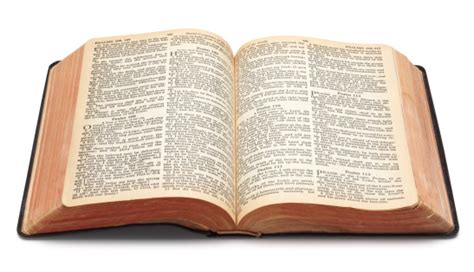@CrowCross
This is to hopefully clarify a point of hermeneutics, which you seem to think is a place to personally insult me without dealing with the text; and bring the thread to a place it should have gone from the beginning, but never has. Something other than a repetition of unproven, and unexamined declaration of presumptive opinion stated as irrefutable fact. As though hermeneutics has nothing to do with finding the correct meaning of a passage.
I likened it to the five w's of journalism that are designed to correctly and thoroughly report events.
1. Who: identifies the people or groups involved.
2. What: describes the event or action that took place.
3. Where: Location
4. When: the time or date
5. Why: Reason, causes, or motivations.
There are minor adjustments in direction in Bible hermeneutics because it is not always reporting an actual event, though sometimes it is. But the principle does not change. All of the above must be identified so that other passages are not misapplied to the one being interpreted, among other things.
So lets take the principle directly into 2 Thess 2. The full chapter.
1. Who: Author Paul. Recipients: The church in Thessalonica, a mostly Gentile congregation. Key figures: The man of lawlessness; the one who restrains; Satan; those who are perishing and do not love truth; Christ.
2. What: Paul is correcting false teachings
or rumors that the Day of the Lord had already come.
He explains certain events must precede Christ's return, including
A great rebellion
The revealing of the man of lawlessness, who will exalt himself as
God.
A restraining force/person that is currently holding him back.
Insight into God's judgement on those who reject truth.
What kind of text: Epistle (didactic/letter) so it is theological
instruction, not allegory or prophecy per se.
3. Where:
Geographically likely from Corinth, to believers in Thessalonica.
Theologically: After Christ's resurrection and ascension, but before
his second coming.
4. When:
Written around 51-52 a.d.---one of Paul's earliest letters.
In redemptive history:
During the early growth of the Church
Under Roman occupation.
Awaiting his second advent.
Why:
Written to comfort and correct believers who were confused or
fearful about the timing of Christ's return.
To clarify that certiain things must happen first, so they should not be
shaken or deceived.
To warn against lawlessness and rebellion.
To reassure the faithful that they are not destined for wrath.
So what you have done is inserted what you
believe Paul is talking about (a pre-trib rapture, 7 year tribulation, a rebuilt temple) when none of those things are mentioned. And that reasoning comes in part by the assertion it must mean that because there is no temple in 2025 and hasn't been since 70 a.d. But on its face, that illogical reasoning, used as it is, to arrive at a doctrinal/theological teaching that a third temple will be built. What Paul gave as signs for the Thessalonians assurance that Christ had not returned, you have turned into a sign that the time is near, and that is based not on biblical information, but worldly information. What you are looking for is a rapture out of tribulation, when that letter clearly indicates that Christians will be on the earth when those things happen---"when you see"---and possibly, if Paul is referring to the temple then standing, some of them would see those things happen, but that does not mean that was the day of the Lord's return. The message was, it had not happened yet. That, and that alone, is what they were concerned about. (And please, I have told you any number of times that I do not believe he has already returned, even if Paul was referring to the temple that was standing when he wrote that letter. So please don't imply or suggest that I do, ever again.)
But also, you cannot give a place anywhere in Scripture that says a third temple will be built, and ignore specific references to Christ being the Temple, and his Church being a temple (John 2:19-21; 1 Cor 3:16; 2 Cor 6:16; Eph 2:21; Rev 21:22). In doing so, you leave out all possible and legit interpretations of Thess 2:2.

